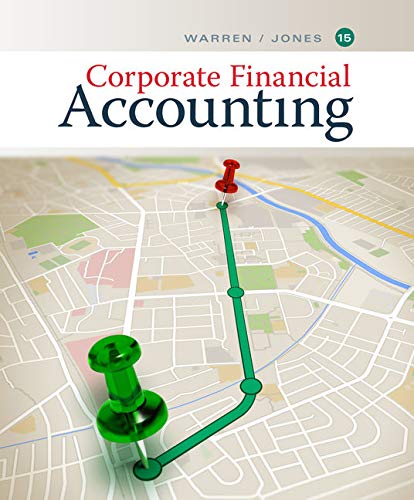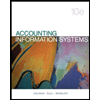
Internal Control: Internal control refers to the policies, and plans of the business organization along with other measures with a view to safeguard its assets, encourage the employees to adhere to the plans, to improve on the operational efficiency, and to ensure correct and reliable accounting information. Internal control is a process which ensures continuous reliability of accomplishment of a company’s objectives, related to operations, financial reporting, and in conformity with laws and regulations.
Five elements of internal control:
- Control Environment: Control Environment refers to the attitude of top brass of the company or the corporate culture. The top brass of the company must set the tone to improve the morale for rest of the employees of the business.
- Risk assessment: The business must be able identify the risk associated with it, and accordingly use the internal control to safeguard its assets and ensures fairness in presentation in accounting information.
- Control procedures: The objective of setting the control procedure is to ensure that the business achieves its objectives.
- Monitoring controls: The internal control used in the business is being monitored by the internal auditors who are hired by the business, to ensure that the employees are adhering to the policies of the business and running the operations efficiently. The external auditors on the other hand ensures that the business accounting records are being maintained in accordance with the Generally Accepted Accounting Principles (GAAP).
- Information and communication: Information and communication system is important for a business and hence only authorized persons should be allowed the access to the confidential accounting information. Approvals are also should be made mandatory for the transactions by the
control system.
To suggest: Appropriate control procedures for preventing / detecting the theft of cash.
Trending nowThis is a popular solution!

Chapter 7 Solutions
Cengagenowv2, 1 Term Printed Access Card For Warren/jones’ Corporate Financial Accounting, 15th
- Don't Use Aiarrow_forwardWhat is the predetermined overhead ratearrow_forwardBabel Ltd uses predetermined overhead rates based on labor hours. The monthly budgeted overhead is $450,000 and the budgeted labor hours were 90,000. During the month the company worked a total of 70,000 labor hours and actual overheads totaled $200,000. The overhead at the end of the month would therefore be$?arrow_forward
- For Bears Company, the predetermined overhead rate is 125% of direct labor cost. During the month, Bears incurred $143,500 in factory labor costs, of which $118,600 is direct labor and $24,900 is indirect labor. The actual overhead incurred was $159,800. Compute the amount of manufacturing overhead applied during the month. Determine the amount of under- or overapplied manufacturing overhead.arrow_forwardWhat are the annual after-tax cash receiptsarrow_forwardCan you explain this financial accounting question using accurate calculation methods?arrow_forward
- A company acquires equipment, which has an estimated useful life of 8 years and no salvage value, for $48,000 at the beginning of the accounting period. What is the adjusting entry for depreciation at the end of one month if the company uses the straight-line method of depreciation?arrow_forwardCould you help me solve this financial accounting question using appropriate calculation techniques?arrow_forwardAsh Corp. prepared a fixed budget of 70,000 direct labor hours, with estimated overhead costs of $350,000 for variable overhead and $90,000 for fixed overhead. Ash then prepared a flexible budget of 65,000 labor hours. How much are total overhead costs at this level of activity? Answerarrow_forward
- You believe the expected return on GANDHI is 12.50%, and that the variance of GANDHI's returns is 0.4900. What is the coefficient of variation for this company? Express the answer with 3 decimal places.arrow_forwardPlease provide the correct answer to this general accounting problem using accurate calculations.arrow_forwardAsh Corp. prepared a fixed budget of 70,000 direct labor hours, with estimated overhead costs of $350,000 for variable overhead and $90,000 for fixed overhead. Ash then prepared a flexible budget of 65,000 labor hours. How much are total overhead costs at this level of activity?arrow_forward
 Survey of Accounting (Accounting I)AccountingISBN:9781305961883Author:Carl WarrenPublisher:Cengage LearningBusiness Its Legal Ethical & Global EnvironmentAccountingISBN:9781305224414Author:JENNINGSPublisher:Cengage
Survey of Accounting (Accounting I)AccountingISBN:9781305961883Author:Carl WarrenPublisher:Cengage LearningBusiness Its Legal Ethical & Global EnvironmentAccountingISBN:9781305224414Author:JENNINGSPublisher:Cengage Pkg Acc Infor Systems MS VISIO CDFinanceISBN:9781133935940Author:Ulric J. GelinasPublisher:CENGAGE L
Pkg Acc Infor Systems MS VISIO CDFinanceISBN:9781133935940Author:Ulric J. GelinasPublisher:CENGAGE L Financial Accounting: The Impact on Decision Make...AccountingISBN:9781305654174Author:Gary A. Porter, Curtis L. NortonPublisher:Cengage Learning
Financial Accounting: The Impact on Decision Make...AccountingISBN:9781305654174Author:Gary A. Porter, Curtis L. NortonPublisher:Cengage Learning




